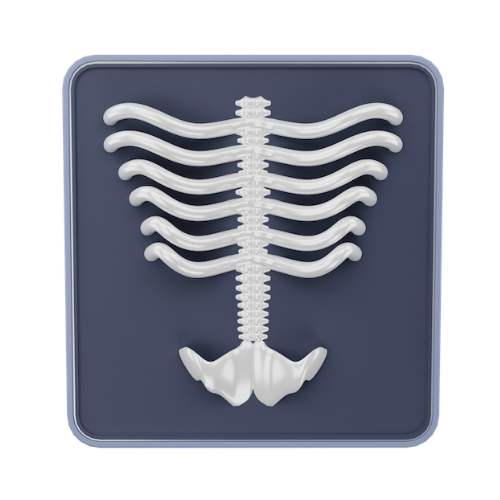Table of Contents
An unusual discomfort is often the first sign, much like a tiny whisper we can overlook. By the next morning, even going to the bathroom may feel like cutting your skin. If you have ever experienced a urinary tract infection, you know that the pain feels very distinct, sudden and cannot be ignored. Unfortunately, you have a much higher chance of getting a UTI if you are a woman.
The good news? Don’t hide your pain and you don’t have to put off visiting a clinic for a whole day. With telehealth available throughout Australia, someone simply needs to click a few buttons to get help. If you don’t feel great, you can talk to a real specialist without having to leave home and get advice on how to get better.
In this blog, we have covered all the essentials about UTIs, including their causes, the warning signs, the best medications and how telehealth helps.
What is a Urinary Tract Infection (UTI)?
Let’s start with a basic question, “what is UTI?” A UTI occurs when bacteria enter the urinary tract and multiply, leading to infection. The urinary tract includes the kidneys, ureters, bladder, and urethra. Though it can affect any part of the urinary tract, most infections involve the lower urinary tract such as the bladder and urethra.
Recognizing Urinary Tract Infection Symptoms
Typical symptoms include:
- Burning sensation during urination.
- Frequent urge to urinate, often passing only small amounts.
- Cloudy, strong-smelling, or bloody urine.
- Pelvic or lower abdominal pain.
- Fatigue.
In more severe cases, such as kidney infections, urinary tract infection symptoms may include fever, chills, nausea, or back pain.
UTI Diagnosis and Treatment
Diagnosis
Generally, a healthcare provider observes your signs for UTI and a urine test is taken to check for bacterial or white blood cell presence. GPs in telehealth consultations can direct patients on how and where they can get their urine tested locally.
Treatment: What is the Best Antibiotic for UTI?
The choice of antibiotic depends on whether the infection is uncomplicated or complicated, local resistance patterns, patient allergies, and other health factors.
Uncomplicated UTIs (common in healthy women) are often treated with first-line antibiotics such as nitrofurantoin or trimethoprim-sulfamethoxazole. Nitrofurantoin is preferred due to its effectiveness and low resistance rates.
Fosfomycin is another effective option, often given as a single dose.
Cephalexin or amoxicillin-clavulanate may be used if first-line agents are unsuitable.
Fluoroquinolones like ciprofloxacin are generally reserved for complicated UTIs or pyelonephritis due to concerns about resistance and side effects.
According to Australian guidelines, fluoroquinolones like ciprofloxacin are generally reserved for complicated UTIs or pyelonephritis (when UTI affects kidney) due to concerns about resistance and side effects
Pregnant women require special consideration; nitrofurantoin and cephalexin are commonly used but nitrofurantoin should be avoided near term.
What Are the Causes of UTI in Women?
According to SA Health, half of all Australian women will suffer from UTI in their lifetime. Women are more prone to UTIs due to their shorter urethra, which makes it easier for bacteria, usually Escherichia coli from the bowel, to reach the bladder. Other factors increasing risk include sexual activity, use of certain contraceptives like diaphragms, menopause related hormonal changes, and poor hygiene. Holding urine for long periods and dehydration can also contribute.
How Telehealth Supports UTI Care
Telehealth for UTI allows patients to consult GPs remotely, discuss symptoms, and get prescriptions quickly. A large study of over 51,000 women found that nearly 9 out of 10 felt better within a week after getting care through telemedicine, whether their symptoms were mild or more severe. This shows telehealth is a safe, easy way to get the treatment you need without rushing to a clinic.
Patients can be directed to nearby labs for urine testing, and antibiotics prescribed electronically. This approach is especially beneficial for:
- People in rural or remote areas
- Those with mobility or time constraints
- Patients seeking privacy and convenience
Early treatment via telehealth reduces discomfort and lowers the risk of complications like kidney infections.
Managing Recurrent or Complicated UTIs via Telehealth
For patients with recurrent UTIs or underlying health issues, telehealth consultations can facilitate ongoing monitoring and timely specialist referrals. GPs may recommend additional tests or preventive strategies such as low-dose antibiotics or lifestyle changes.
Conclusion
UTIs are common but treatable infections. The most effective antibiotics for UTIs are nitrofurantoin, trimethoprim-sulfamethoxazole and fosfomycin; however, treatment varies from person to person. Women are at higher risk because of their anatomy and certain lifestyle choices. Telehealth for UTI is useful in helping Australians get diagnosis and treatment and it improves their results and reduces the difficulty of reaching care.
If your body calls out for support, it shouldn’t be a huge challenge to find the medical attention you require. It should be like having someone supportive, who tells you, “We’re with you”.
If you notice signs of a UTI, book a telehealth appointment with us to receive expert care and get treated shortly after.
References:
- Urinary tract infection (UTI) – Symptoms and causes. (n.d.). Mayo Clinic.
https://www.mayoclinic.org/diseases-conditions/urinary-tract-infection/symptoms-causes/syc-20353447 - Bladder inflammation (Cystitis). (2025, April 15). Cleveland Clinic.
https://my.clevelandclinic.org/health/diseases/21203-bladder-inflammation-cystitis - Healthdirect Australia. (n.d.). Urinary tract infection (UTI). Symptoms, Treatment and Prevention | Healthdirect.
https://www.healthdirect.gov.au/urinary-tract-infection-uti - Urinary tract infection (UTI) – Diagnosis and treatment – Mayo Clinic. (n.d.).
https://www.mayoclinic.org/diseases-conditions/urinary-tract-infection/diagnosis-treatment/drc-20353453 - Administration, T. G. (2025, March 7). More prominent warnings about serious side effects for fluoroquinolone antibiotics. Therapeutic Goods Administration (TGA). https://www.tga.gov.au/news/safety-updates/more-prominent-warnings-about-serious-side-effects-fluoroquinolone-antibiotics
- c=AU; o=The State of Queensland; ou=Queensland Health; ou=Clinical Excellence Queensland; ou=State-wide Access Team; (2023, June 26). Urinary tract infection (UTI). Queensland Health.
https://www.health.qld.gov.au/clinical-practice/guidelines-procedures/clinical-pathways/residential-aged-care-clinical-pathways/all-pathways/urinary-tract-infection-uti - NICE. (2018, October 31). Overview | Urinary tract infection (lower): antimicrobial prescribing | Guidance | NICE.
https://www.nice.org.uk/guidance/ng109 - scheme=AGLSTERMS.AglsAgent; corporateName=Department for Health and Wellbeing; address=11 Hindmarsh Square, Adelaide, SA, 5000; contact=+61 8 8226 6000. (2024, February 29). Urinary tract infection (UTI) – including symptoms, treatment and prevention | SA Health.
https://www.sahealth.sa.gov.au/wps/wcm/connect/public+content/sa+health+internet/conditions/infectious+diseases/urinary+tract+infection/urinary+tract+infection+uti+-+including+symptoms+treatment+and+prevention - Real-world evidence: Telemedicine for complicated cases of urinary tract infection. (2023). PMC.
https://pmc.ncbi.nlm.nih.gov/articles/PMC9894494/














